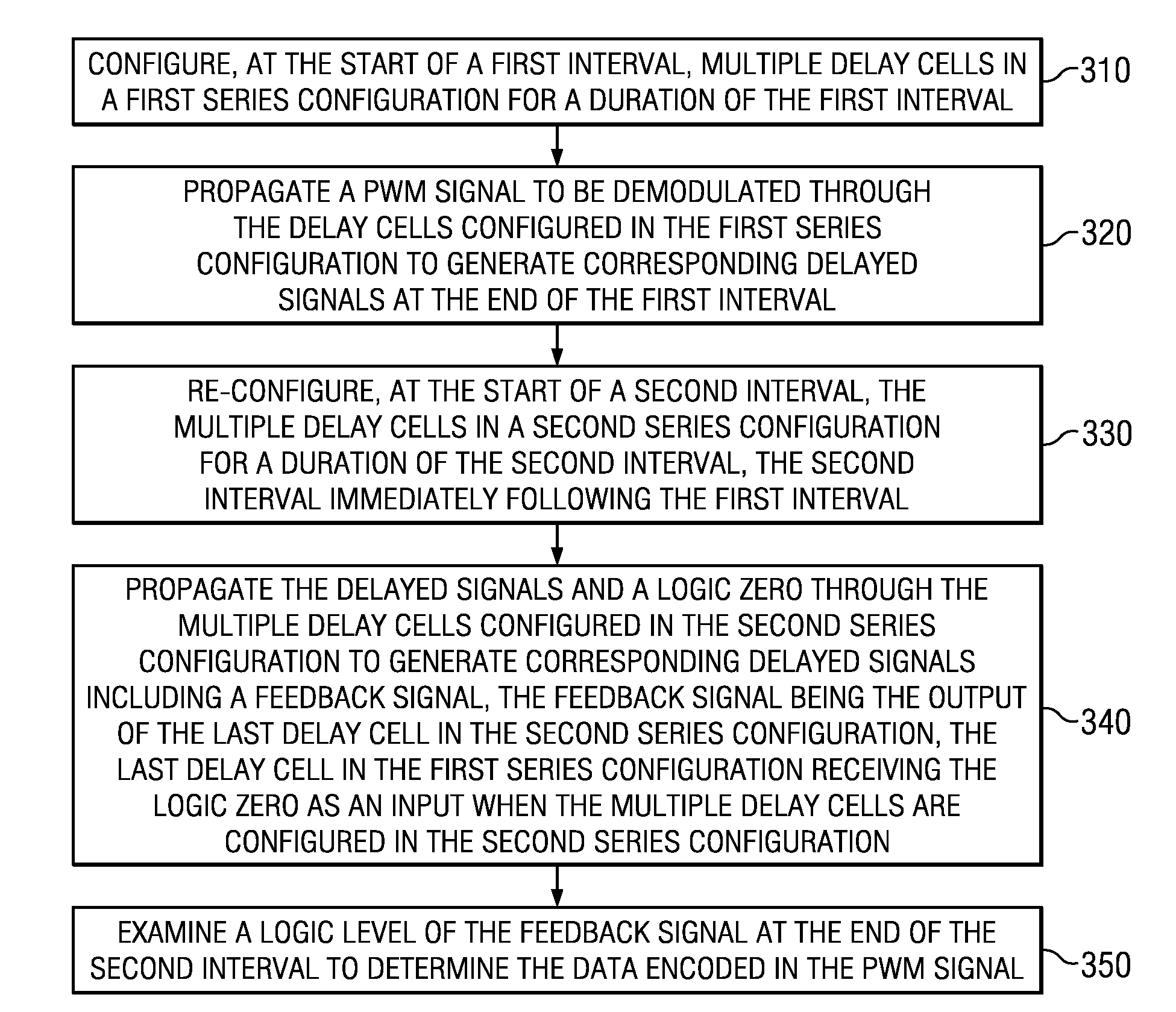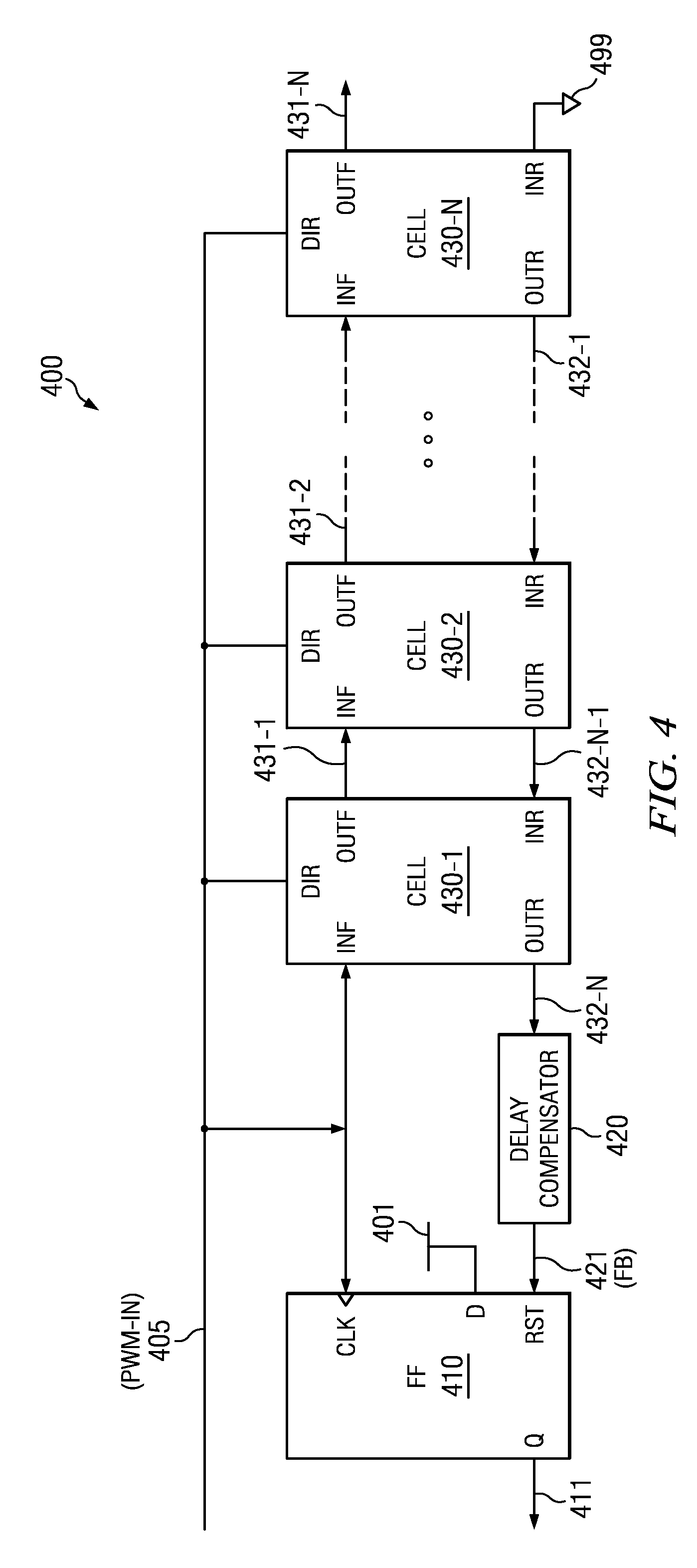Digital demodulation of pulse-width modulated signals
a digital demodulation and pulse-width technology, applied in the field of digital demodulation, can solve the problems of not being easily scalable with respect to the frequency of the pwm signal, complex approach in terms of design effort and circuit layout,
- Summary
- Abstract
- Description
- Claims
- Application Information
AI Technical Summary
Benefits of technology
Problems solved by technology
Method used
Image
Examples
Embodiment Construction
[0021]Various embodiments are described below with several examples for illustration.
[0022]1. Example Environment
[0023]FIG. 1 is a block diagram illustrating the details of an example environment in which several embodiments can be implemented. FIG. 1 is shown containing transmitter 110 and receiver 120. In an embodiment, each of transmitter 110 and receiver 120 is designed to operate according to M-PHY (mobile interfaces standard) or USB3 protocol. However, transmitter 110 and receiver 120 may in general operate consistent with any other standard that uses pulse width modulation (PWM). Transmitter 110 transmits PWM signals to receiver 120 on path 112. Receiver 120 demodulates the PWM signals to extract the corresponding data values.
[0024]While the description below is provided with respect to demodulation of a single period of a PWM signal, it may be appreciated that the demodulation technique(s) can be extended without limit to demodulate each of multiple periods of the PWM signal...
PUM
 Login to View More
Login to View More Abstract
Description
Claims
Application Information
 Login to View More
Login to View More - R&D
- Intellectual Property
- Life Sciences
- Materials
- Tech Scout
- Unparalleled Data Quality
- Higher Quality Content
- 60% Fewer Hallucinations
Browse by: Latest US Patents, China's latest patents, Technical Efficacy Thesaurus, Application Domain, Technology Topic, Popular Technical Reports.
© 2025 PatSnap. All rights reserved.Legal|Privacy policy|Modern Slavery Act Transparency Statement|Sitemap|About US| Contact US: help@patsnap.com



